| 1 | Crossed pitviper |

Brazil has 30 Bothrops pitvipers, in many varying habitats. In species like the jararacussu, the best view they see in their lives is the next gnarly, 300 year old tree trunk. Then you have the crossed pitviper, which lives mainly in open grassland, and has far more glorious views as a result.
This is a 120cm species with a cytotoxic venom. It mainly inhabits southern Brazil, and contributes a moderate amount to annual bite statistics. Crossed pitvipers shun forests, and like open areas which typically have an excellent view of the surrounding hills. Humans spot them most commonly on dirt roads, and being southern Brazil, these grasslands are well lit with the sun’s rays.
If a helicopter is flying in, the crossed pitviper will know. If the Brazilian army is sending tanks to eradicate them, the crossed pitviper will know. The only downside to such spectacular views is that birds can zero in on them. Bothrops alternatus regularly falls victim to burrowing owls, which start by decapitating them. Luckily, their grassy plains are filled with mammal burrows which crossed pitvipers can shelter in.
| 2 | Red diamond rattlesnake |
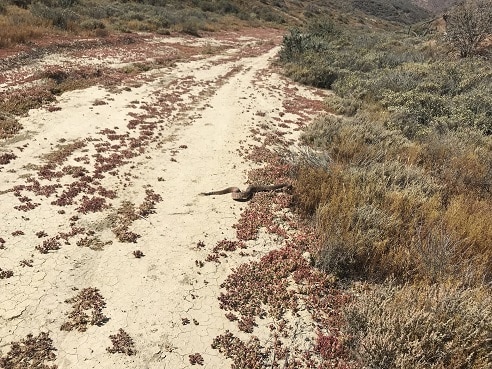
The red diamond rattlesnake is found in one US state: California. While they’re far from a high altitude snake, reaching a maximum of 1400 metres, they still spend their life amidst Californian views ripped straight from a postcard. This is because their favourite habitat is shrubby desert foothills, with plenty of rocks.
Red diamond rattlesnakes often rest on these rock slabs, making their views even more glorious. They also have more endangered colonies on the west coast near Los Angeles, but much of their territory is glorious, pristine California wilds.
Snakes have the power to detect female snakes with their tongue, and males can follow trails several miles to find a mate. A red diamond rattlesnake could probably spot a female on the next hill instead, if it tried hard enough. If a team of herpetologists arrived, carrying equipment up the hill, then the red diamonder would know in advance and be able to vanish rapidly. This is a venomous species, but comparatively mild, with few confirmed deaths. Crotalus ruber is larger than average, maxing out at 162.5cm.
| 3 | Adder |
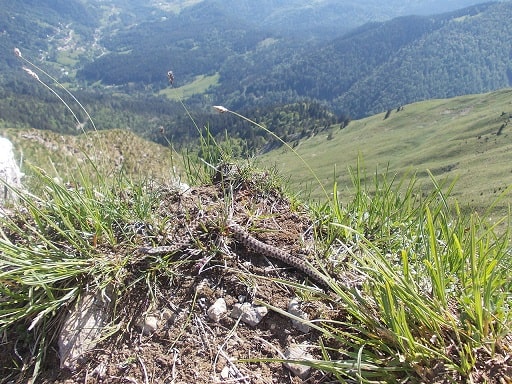
The common European adder is the most northerly snake in the world, reaching northern Sweden, and this cold-resistant physiology also applies vertically. As well as mild British woodlands, adders appear in the higher reaches of the European alps, giving them stellar views to gaze at.
Adders appear at 2000 metres in Austria and Switzerland, often in a melanistic, fully black morph to increase sunlight absorption. Adders are flexible, appearing in mountain forests, but also open rocky hillsides, where the entire valley below is visible. Some even live on slopes that cablecars pass over, or beneath cables which carry chairlifts in winter. When late October arrives, these mountainous adders vanish deep into burrows and may not surface until May, depending on how fast the snow melts.
In summer, they enjoy fantastic views for free, which most tourists have to pay to access. If they were smart enough, they might be able to gaze beyond the distant mountains and see whether an early season snowstorm is blowing in. While these views allow them to see tourists approaching on paths, adders are only moderately aggressive. They’ll lunge on command, but won’t charge down innocent people and bite.
| 4 | Utah mountain kingsnake |
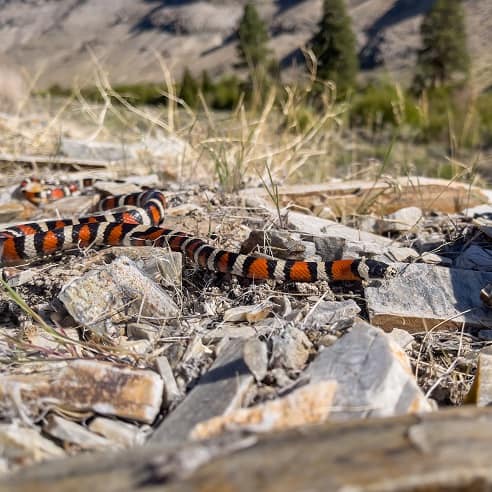
A subspecies of the Arizona mountain kingsnake. While other kingsnakes live in moist meadows on the borders of towns, Lampropeltis pyromelana infralabialis has been handed the rugged mountains of Utah by fate. Within these mountains they avoid dense pine forests where fallen logs block their vision, and stick to open areas with sweeping views.
Utah mountain kingsnakes measure 60-90cm, and have red-black-white patterns, while the California kingsnake found in southern Utah is purely black-white. Utah mountain kingsnakes feed on mammals, lizards and fellow snakes, and to find them, they prowl patiently around their mountainous domain. This species isn’t especially fast, not compared to the lightning fast coachwhip. But they’re exceedingly persistent, and will prowl their valley landscapes all day searching for subtle scent molecules.
As well as Utah, this subspecies inhabits eastern Nevada. They reach altitudes of 2000 metres, and are a nocturnal species (unlike a California kingsnake), which tends to stay still during the day amongst rocks, possibly gazing at the sweeping vista in front of them. Utah mountain kingsnakes are non-venomous and pose no threat to humans, should you encounter one while hiking. This is a constrictor with unusually efficient coil formations.
| 5 | Cape cobra |
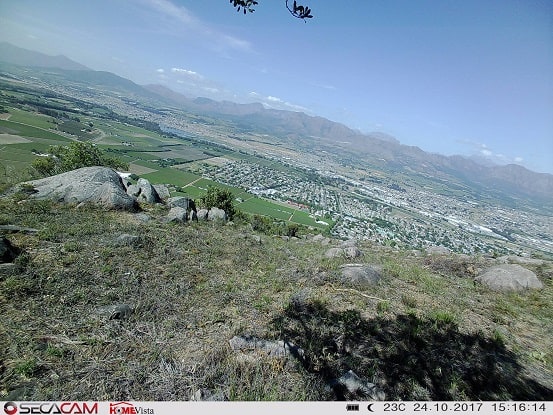
The most common cobra in Botswana, Mozambique and coastal South Africa. Cape cobras are a flexible species, and fear no habitat except sand dunes. They can inhabit grasslands, woodlands and towns, and this neverending adventure often takes them to the top of windswept, grassy hills. They’re lured upwards by irresistible animal scents, and if a hill has an abundance of burrowing mammals, then they might stay there permanently.
Cape cobras can be a problem for weekend hikers, potentially blocking paths. They have an excellent view of towns below their hills (or would do if their eyesight was decent). Most worryingly, they have an excellent view of you. Cape cobra venom combines cytotoxins, haemotoxins and neurotoxins into one fatal mixture. Bites are commonly fatal, although most South African hospitals stock the antivenom.
According to folk wisdom, the number one thing on any cobra’s mind is finding a human to attack. With clear views from their hill, it’ll be far easier to spot a hiker as they trudge upwards. Fortunately, this alson works in reverse. You’ll also get an advanced view of the cobra, reared up with its hood. You’ll then spot them early, as they charge at you down the hill with a frenzied rage in their eyes.
| 6 | Anatolian meadow viper |
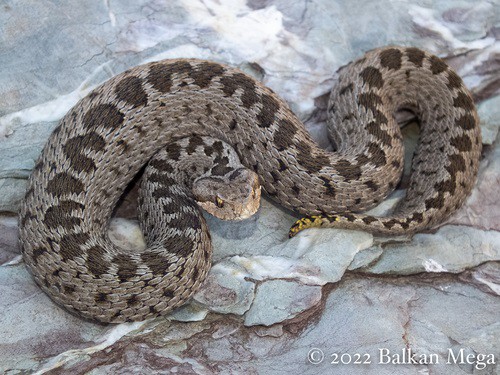
This rare Turkish species is surrounded on all sides by breathtaking views. Vipera anatolica is rare because they live only in mountainous sky islands above 1500 metres in altitude. These small pockets are separated by hundreds of miles of hot plains at 37C plus, in which this cold-adapted viper cannot survive. By their very nature, they live in sanctuaries that tower above the surrounding land.
Anatolian meadow vipers are closely related to the meadow viper of Italy, but are an independent species, which is now endangered. They measure 40cm, and have a venom rich in metalloproteinases, which unleash necrosis and swelling, or would if they weren’t so isolated from human civilisation. Vipera anatolica lives only in remote areas, and are rarely found even on dedicated herpetological expeditions.
Those that are unearthed are typically on open slopes exposed to harsh winds, rather than mountainous forests. This snake has a constant view of the rugged hills and flat plains below. A life without fantastic views is unimaginable to them. This species lives in at least two pockets: one in the Geyik Mountains and another in the Kohu-Dag Mountain massif.
| 7 | Sonoran gopher snake |
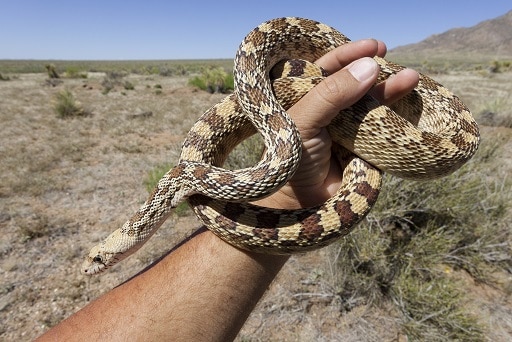
A desert-adapted snake of Arizona and northern Mexico. Pituophis catenifer affinis is found at any severity of dryness except fully-fledged sand dunes. It’s a snake of parched desert flats intermingled with cacti and creote bushes, plus gravelly desert slopes and dried out stream beds below them. These offer some of the greatest vistas in the USA, with miles of desert followed by mysterious hills in the distance, which bounty hunters would have ridden towards 160 years ago while pursuing bandits. The Sonoran gopher snake was there then, watching the spectacle unfold, it was there 200,000 years ago, and it’s still there now.
This is a non-venomous species, which is incapable of killing a human. They can have a feisty temperament, but are easy to pick up without suffering any serious damage.
Sonoran gopher snakes have an enclave in southeastern California, and can inhabit dry woodlands, as well as wide open desert vistas. They can inhabit various elevations, from sea level to 2700 metres high. Their prey mainly consists of mammals, including pack rats, whose burrows it invades.
| 8 | Coachwhip |
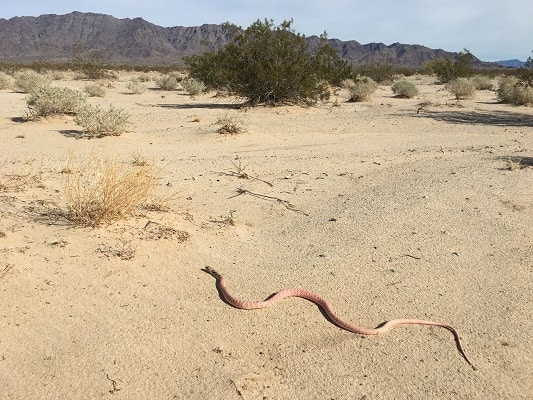
The coachwhip is similar to the cape cobra. It’s extremely fast and adventurous, and combined with a preference for open habitats, this often brings them to spots where they can witness the entire landscape unfolding before them.
Coachwhips reach 2.5 metres and are found in every state of the US south, from Florida to Texas to California. Coachwhips are non-venomous, and prey mainly on lizards with a side helping of mammals. They don’t appear in towering mountain ranges, but are found in sweeping wild areas with hills, long grass and dry forests visible in the distance. It’s possible to spot a coachwhip in the far distance with high-powered binoculars, if you possess a particular set of skills.
Coachwhips are so fast and manic that they might not even notice the great views they’ve been granted. They’re normally completely in their own world, in mad pursuit of a lizard trail which only they’ve noticed. Everything in the coachwhip’s world happens in the blink of an eye, and there’s no time to stop and gaze over the horizon like a rattlesnake.
| 9 | Night snake |
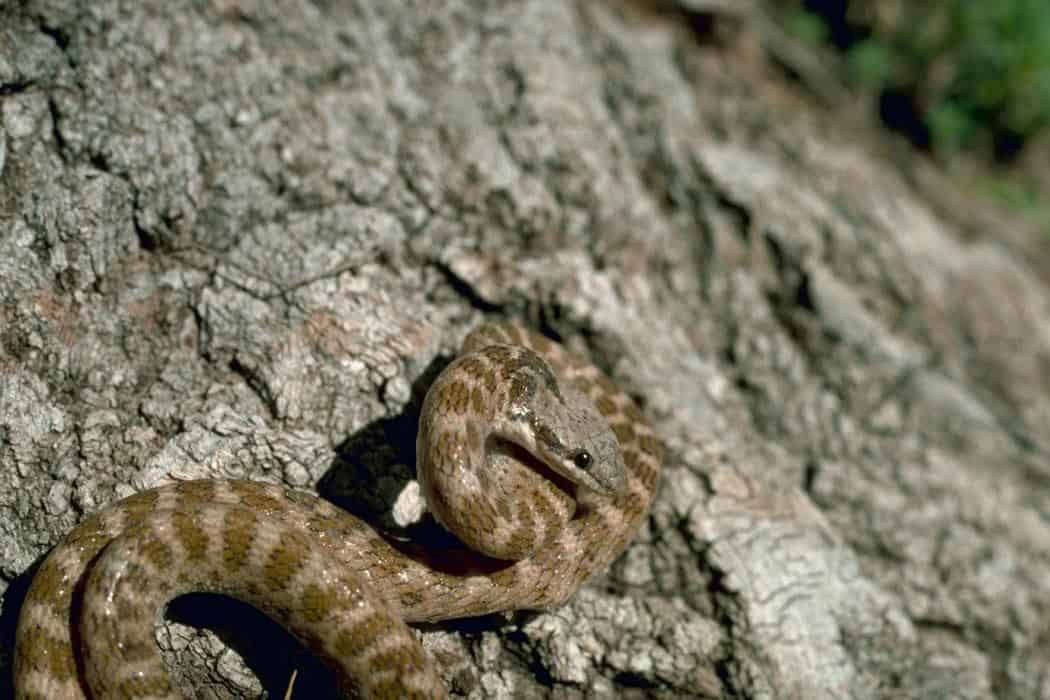
Night snakes are a harmless US species found in open, dry habitats. Above all else, they favour jumbled rock fields, which are constantly shifting and changing due to erosion. These are often at high altitudes, meaning that night snakes only have to slither onto a large stone slab to see a breathtaking view.
One particular hotspot for nightsnakes is the talus slopes of eastern Washington state, many of which hang over winding mountain roads with hairpin bends. Drivers have a stunning view from these roads, and night snakes can also see the stunning vistas below. This snake appears in sparse oak-savannah woodlands sometimes, but never dense forests. Wide open semi-deserts are another habitat, as long as there’s plenty of rocks.
The old rule states that if an enemy can see you, you can see them. This definitely doesn’t apply to the night snake. If they poke their head out of a rock field and watch your car speed past, all you’d see would be a miniscule dot, even if you knew what to look for.
| 10 | Prairie rattlesnake |
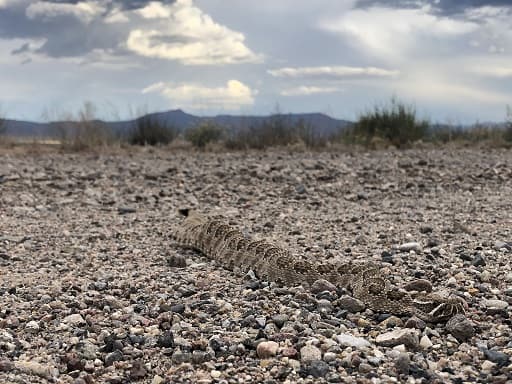
The prairie rattlesnake lives east of the Rocky Mountains, in a large stretch of the US mid-west, plus southern Canada. They never appear in forests, and inhabit sweeping hills and grasslands of the Great Plains. This means they spend their entire life amid sweeping views on each side, formerly the site of majestic buffalo herds and Native Americans trying to hunt them.
Prairie rattlesnakes are distinctive among their family for embarking on a huge migration each year. They can travel 5, 10 or 20 miles just to reach their summer feeding grounds. The sights they see on these journeys must be immense. To another animal, the sweeping vistas of the Great Plains might lead them astray, lost in a terrifying canyon. But Crotalus viridis has such excellent smell that they can travel 10 miles and then return to the same comfy hibernation crack each year.
Prairie rattlesnakes reach a record of 151.5cm, and are middling in venom toxicity for their family. As juveniles, their venom is rich in muscle-targeting myotoxins, which switch to skin-dissolving metalloproteinases with age.
